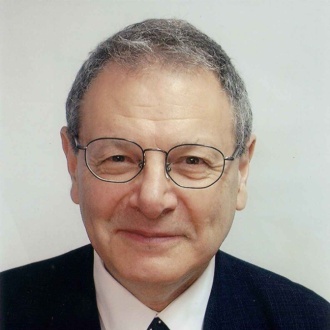The Real You
Michelangelo once said, “I saw the angel in the marble and carved until I set him free.”
The essence of every Jew is a beautiful perfect soul. It is unmarred by ego, immaturity, insecurity, obsession, or any other form of human weakness. This beautiful soul, more pristine than the angel in the marble, is placed in a human body. The body has an ego, self-consciousness, self-esteem issues, cravings, weaknesses, and more. The trick is to peer past the surface and find the angel in the marble. The greater trick is to set the soul free.
On the surface, people seem marred, unhealthy, obnoxious, sometimes narcissistic, often egotistical, etc. They can be a real turn off. Some people are cocky and self assured, others are timid and afraid. The outer image is often fractured. We must train ourselves to see past the outer layer and view these negative traits as trivial externalities. The real person is the perfect soul trapped within.
When we see people that way, we empower them to see themselves that way. And that sets them free.
Written Or Engraved
There are two types of letters. One is written, the other is engraved. The difference is that written letters are not inherent to the parchment on which they were written. They adhere to the parchment and can cling to it tenaciously to the point that tearing them away can damage the parchment. But that does not make them part of the parchment Just as they were written so can they be erased.
Engraved letters are different. They are not foreign substances that adhere to the stone. They are part of the stone. When the stone is carved or engraved in a certain pattern, a letter is set free. It cannot be removed because it is part of the stone. It can only be filled in or covered up, but the part of the stone that comprised the letter remains intact under the filling.
The Real You
The trick in life is to figure out which of your habits are written and which are engraved. Which represent the real you, and which are extraneous baggage that you collected over time. What you collected; you can discard. The real you can’t be discarded.
Sometimes you might snap at someone in anger and feel bad about it later. Which is the real you, the person who snapped or the one who regretted it? In your heart of hearts, you know that the snapper is not the real you. If it were, you would not regret it later. That you regretted it tells you that the real you cringed at the snap even more than the person you snapped at.
There is no question that we accumulate bad habits, self-image issues, obsessions, insecurities, fears, etc., during our life’s journey. Not every thought that comes to mind is beautiful and pure just because you are G-d’s child. But though the surface needs some tidying up, the real you underneath all the negatives, is precious and pristine.
We all know this about ourselves. The trick is to see it in others. Growing up around the Lubavitcher Rebbe, I heard him talk constantly about the beauty and value of a fellow Jew. Every Jew is a prince, he would say. A descendant of Abraham, Isaac, and Jacob. A child of G-d. When a Jew sins, you have to wonder how it happened since sin is so foreign to the essence of a Jew.
President Shazar
Mr. Zalman Shazar was the third president of Israel. His father was a Chabad Chasid, and as a child, he too was a devout Chasid. As a teenager, he was swept up in the Zionist movement that swept across Eastern Europe, and he moved to Israel. His outer habits changed over time; he dropped some of his cherished traditions as he became active in the movement.
He rose through the ranks, was elected to the Knesset, and was eventually appointed chairman of the Jewish Agency. He would go on to become the third president of the State of Israel. But throughout his journey, he never severed ties with chassidim and with his inner chassidic persona. He knew that his behavior was not that of a chassid, but in his heart he remained aflame with the passion of a chassid.
On a state visit to America in 1966, he had an audience with the Lubavitcher Rebbe. The Rebbe sent a delegation of venerable Chasidim to greet him at his hotel and to accompany him to the Rebbe’s office in Brooklyn. The veteran Chasid, Rabbi Shmuel Levitin, led the delegation.
As is customary among Chasidim, they had an impromptu farbrengen upon arrival. They exchanged some thoughts and shared their feelings about the president’s upcoming visit with the Rebbe.
The president turned to Reb Shmuel in a moment of candor and asked a very personal question. I am a chassid the son of a chassid, and my great grandfather was a chassid of the first Chabad Rebbe. That is the truth. At the same time, I am an ardent Zionist whose lifestyle is very different from that of a chassid That too is the truth. So, pray tell me, which is the real me?
Rabbi Levitin did not miss a beat and responded succinctly in the true spirit of chassidus. “The truth of a Jew is true. The falsehood of a Jew is false.”
Let’s unpack his answer.
As a Jew, you have two souls. The G-dly soul, that is the real you. And the animal soul—the inner beast that rises up and demands to be indulged. That is not the real you. It is extraneous silt that adheres to you.
Anything you do at the behest of your animal soul can’t become the real you. It may take over your heart and mind, it may fill your time and consciousness, and it may kindle your passion, but it is not you.
Then comes the moments when you drop all pretenses and return to your real identity. You behave like a true Jew and feel the stirrings of your soul. Those moments, those experiences, are reflective of the real you. These acts pierce your outer shell and become part of who you really are.
The Talmud (Chagigah 26b) declares that Jewish sinners are filled with mitzvot as a pomegranate is filled with seeds. How can one be a sinner and be filled with mitzvot?
The answer is that his sins are not him, they are foreign to him; attached only to his outer layer. A well-crafted disguise, but a disguise, nonetheless. The mitzvot he does are his truth, they enter and fill him, they are the real him. Therefore, a Jewish sinner is filled internally with mitzvot. His sins are merely outer accoutrements. His mitzvot are his truth. He so filled internally with mitzvot that he has no room within for sin. The sins, the silt, can only attach themselves to the outside. The inside is pristine.[1]
Chukim—Edicts
G-d did not reveal the reason for some His mitzvot. These mitzvot are called chukim, edicts. Chukim also means engraved. Why do we them if we don’t understand them? Because they are chukim—engraved in our souls; part of who we are.
You don’t know why, but you still do them because they are the real you.
[1] Toras Menachem 5728:1, p. 56; p. 68.

























